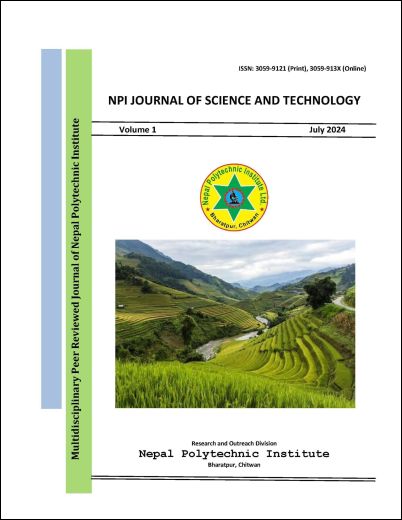Seroprevalence of PPR in Goats of Buffer Zone of Chitwan National Park
DOI:
https://doi.org/10.3126/npijst.v1i1.68942Keywords:
Seroprevalence, PPR, Goats, Buffer ZoneAbstract
A study conducted from September to December 2019 aimed to assess the seroprevalence of Peste des Petits Ruminants (PPR) in goats residing in the buffer zone of Chitwan National Park. A total of 221 serum samples were collected from unvaccinated goat flocks across the buffer zone regions (48 from Bhojad, 64 from Bhandara, 66 from Padampur, 25 from Gondrang, and 18 from Kathar) using random sampling techniques. Competitive Enzyme-Linked Immunosorbent Assay (ELISA) was employed to detect antibodies against the PPR virus (PPRV). The study revealed an overall seroprevalence rate of 28.96%. The highest seroprevalence rate of 39.58% was observed in goats from Bhojad, while the lowest rate of 15.63% was found in goats from Bhandara. The findings emphasize the need for regular vaccination of small ruminants in Bhojad, Padampur, and Kathar to enhance immunity and prevent PPR infection. Additionally, such measures can help mitigate the transmission of PPR between goats and wild animals as they share common grazing lands.
Downloads
Downloads
Published
How to Cite
Issue
Section
License
All rights reserved. No part of this publication may be reproduced, distributed, or transmitted in any form or by any means, including photocopying, recording, or other electronic or mechanical methods, without the prior written permission of the publisher, except in the case of brief quotations embodied in critical reviews and certain other non-commercial uses permitted by copyright law.




